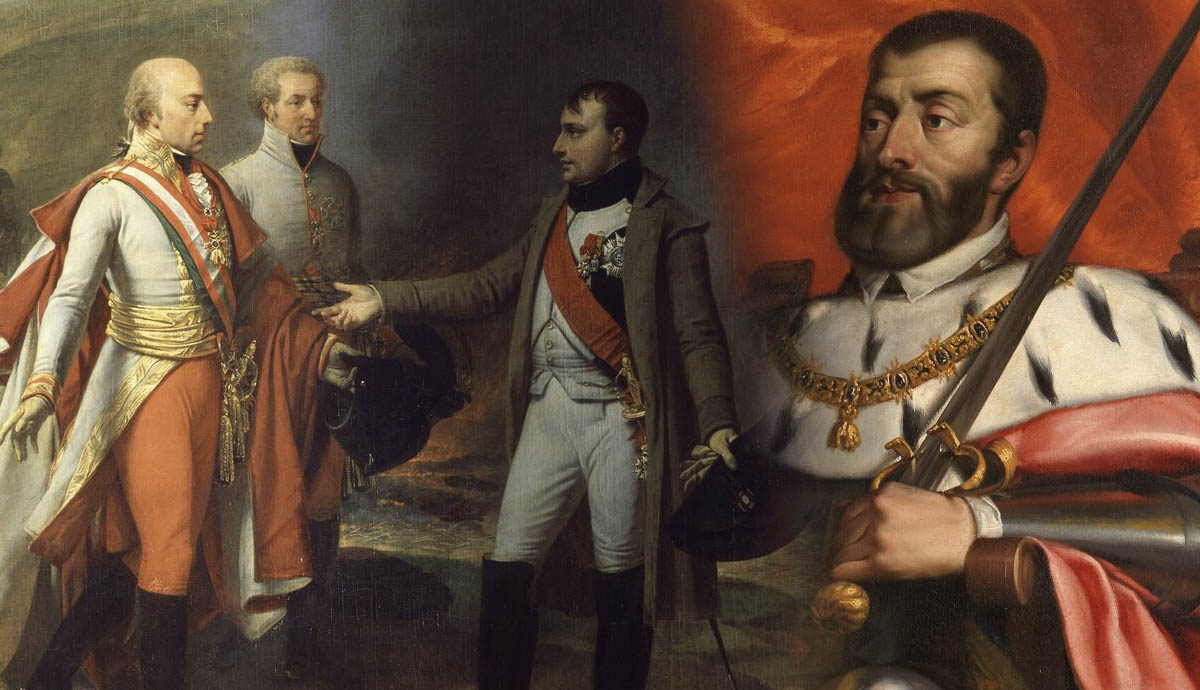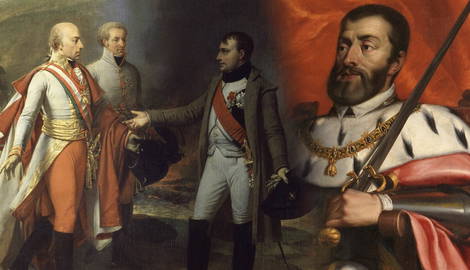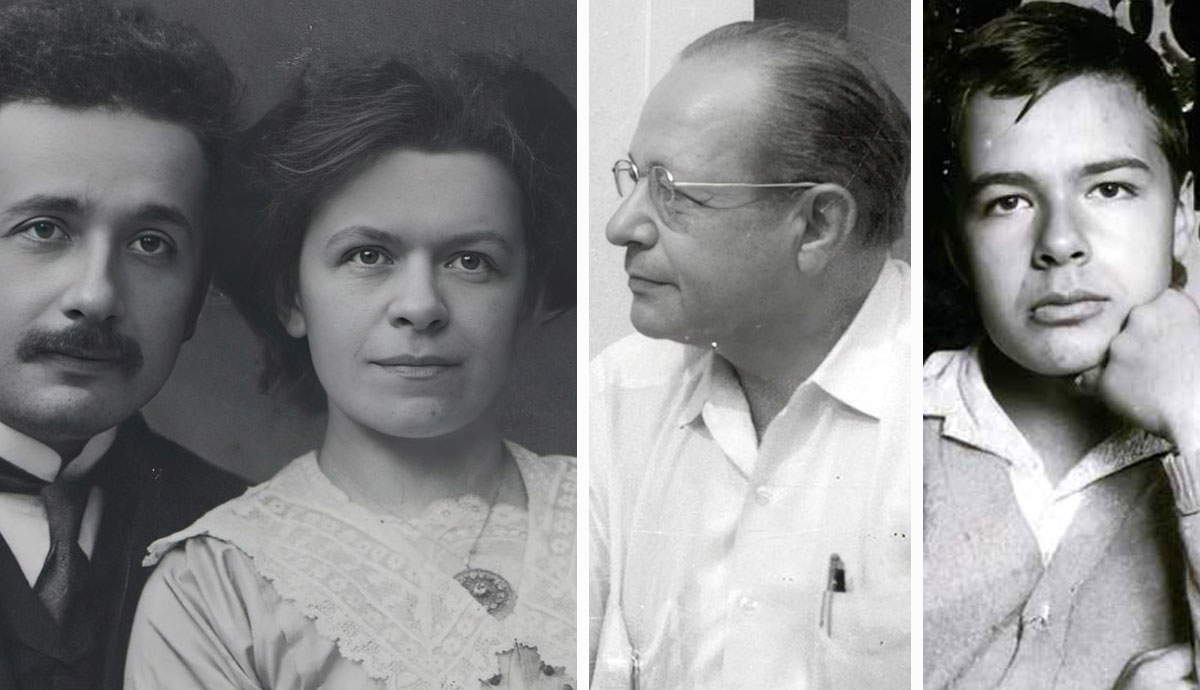
This article is a two-part series, for Part I see The Habsburgs: From the Alps to European Dominance (Part I)
Starting as Counts who held restricted lands in the Swiss Alps, the Habsburgs became a global local power in Swabia before obtaining the Roman Crown. Thanks to their dedication to the German cause and a series of marriages and unions, the Habsburgs rose to the Imperial Crown. From there, they expanded their influence beyond the Holy Roman Empire’s boundaries into Southern Italy, Central Europe, Iberia, and the Netherlands.
By the late 15th century, Frederick III and Maximilian I had established Habsburg rule on the Burgundian, Spanish, and Hungarian seats of power. Their successor, Charles V, became Emperor at the beginning of the 16th century; he ruled a vast domain, including the Holy Roman Empire with all its possessions, the Netherlands, Spain, and its early colonies in the Americas. However, as history would have it, great powers do not remain indefinitely.
Following the death of Charles, the Habsburgs’ possessions were divided between various family branches. The strong Empire built by the family was slowly dismantled as the Habsburg rulers faced horrific wars with France and Great Britain, economic struggles, and finally, the revolutions of the 19th century and the slow collapse of European Monarchies.
The Habsburgs, the Challenges of Protestantism, and the Ottomans

In 1526, Charles V consolidated his realms against two major threats: the Lutheran Church and the Ottoman Empire.
The Protestant Church gained ground in the German Principalities. Due to the nature of the political system of the Holy Roman Empire, the Habsburgs could not do much to stop the spread of reformists in Germany. However, the monarch had more room for action in the Netherlands and Spain. Due to strict policies and intense oppression, Charles V managed to abort all Protestant attempts to get a foothold in Spain. The infamous Spanish Inquisition served greatly in this purpose. However, matters were different in the Low Countries.
Many Dutch nobles and merchants embraced the Reformation despite Habsburg oppression. As years went by, more important local lords turned against Rome. According to some accounts, Charles’ intolerance towards Dutch Protestants would be the stepping stone of the independence of the Netherlands one century later.
The Ottoman Empire posed another major threat to the Habsburg Hegemony in Europe. Sultan Suleiman I conquered Belgrade in 1521, making Constantinople the most powerful player in the Balkans. In 1526, Ottoman armies destroyed Hungarian troops led by King Louis II at Mohacs. This defeat would cause the death of the last Jagiellonian ruler of Hungary and thus legally pass the crown to Ferdinand von Habsburg, the Emperor’s brother.
In the following years, the Turks annexed large parts of Hungary and threatened Vienna. In 1529, the Ottoman army led by the Sultan besieged the Austrian capital. Despite great efforts, the defenders held their ground and forced the Turks to retreat. However, Charles V and his brother Ferdinand begrudgingly accepted the partition of Hungary into three states: the independent Principality of Transylvania, Royal Hungary ruled by Ferdinand von Habsburg, and Ottoman Hungary, a vassal to Constantinople.
The Austrian and Spanish Branches of the Habsburgs

Suffering from depression, Charles V progressively abdicated his crowns for his son Philip and brother Ferdinand. By the end of his rule, the Habsburgs ruled over Spain, Naples, Sicily, Sardinia, Milan and other northern Italian principalities, the Low Countries, Austria, Bohemia, and Hungary, in addition to the Spanish colonies in the Americas.
Charles first relinquished the Low Countries to Philip in October 1555. A few months later, the Emperor also gave his son the Spanish, Sicilian, Neapolitan, and Sardinian possessions. Finally, Charles V supported the election of Ferdinand to the Holy Roman Crown, thus abdicating from his last realms in Germany, Central Europe, and Northern Italy.
Charles V retired to the Yuste Monastery in Spain and died on September 22nd, 1558. He would be remembered as one of the most influential figures of world history and the greatest of all Habsburg rulers.
The attachment of the Protestant Low Countries to the fiercely Catholic Spanish Crown would lead to major discontent among Dutch noblemen. In 1568, the Netherlands, led by the House of Orange, declared independence, beginning the tragically famous Eighty Years’ War. In the meantime, Philip managed to acquire the crown of Portugal following the death in battle of King Sebastian.
By Philip’s death in 1598, the Habsburgs of Spain controlled all of the Iberian Peninsula in addition to a large colonial empire spanning from the Americas to the Indian Subcontinent in Asia. But the seeds of discord in the Habsburgs land were planted and were about to explode in a series of tragedies that would stretch on for the next two centuries.
The Eighty Years’ War & the Thirty Years’ War

In 1600, Philip III of Spain was already in a conflict with the Dutch nobility for control over the Netherlands. By 1608, the lack of pay for Spanish forces located in Flanders would lead to a major stagnation of the conflict and a truce that would last 12 years.
The war would reignite in 1620. Two years earlier, Archduke Ferdinand II of Austria imposed major restrictive laws on Bohemian Protestants, igniting the Thirty Years’ War between Catholics and Protestants all around Europe.
Initially defeated, the Protestants kept up the fight from the Netherlands, thus reigniting the 80 Years’ War. The Swedish and French interventions in favor of Protestantism turned the tide of both conflicts. The Treaties of Münster and Osnabrück, known together as the Treaty of Westphalia, both signed in 1648, recognized Dutch independence and strengthened the small kingdom of Brandenburg-Prussia.
The Austrian Habsburgs remained the rulers of the Holy Roman Empire. However, France, Sweden, and local Protestant kingdoms and principalities strongly diminished Habsburg influence. In the meantime, Spain remained in possession of the lower Netherlands, but its prestige was strongly damaged. Twenty years later, Madrid lost Portugal and its colonial possessions, further damaging its position as a global power and enticing France and Great Britain to seriously threaten its interests in Europe and the Americas.
The End of the Spanish Line

The Thirty Years’ War changed the balance of power in Europe. Spain, which was once considered the most powerful country on the continent, was overruled by France. The latter even inflicted an additional defeat on Madrid in the 1670s, shrinking the Habsburg’s influence even further.
The Nine Years’ War that lasted from 1688 to 1697 almost led to a division of Spanish colonial possession. However, Charles II of Spain proposed to recognize Philip of Anjou, grandson of the French King Louis XIV, as heir to avoid the Empire’s division. In 1700, Charles died, thus ending the Habsburg line of Madrid.
Philip of Anjou was crowned Philip V of Spain of the House of Bourbon. The Austrian line of the Habsburgs contested the coronation, and the War of the Spanish Succession followed. The ruler of the Holy Roman Empire, Leopold I, attempted to have his son Charles crowned king and managed to get the support of the British.
This conflict would have major international consequences. At the end of the war in September 1714, Philip was recognized as King of Spain on the condition that he would renounce all rights to the French Crown. Additionally, the Austrian Habsburgs would gain all the remaining Spanish positions in the Low Countries.
Spain survived the death of Charles II and remained an independent country despite the rule of a French king. In fact, today’s Spanish King Philip VI is a descendent of Philip V and Louis XIV.
The Habsburgs, however, lost a major European realm and access to the largest colonial empire of the time. Thus, their influence was set towards an unavoidable decline.
The Habsburgs in the 18th Century

Following the loss of Spain and the continuous decline of centralized rule in the Holy Roman Empire, the Habsburgs focused on consolidating their power. To that end, the Archdukes of Austria managed to turn the tables on the Ottomans and make major gains in Hungary and the Balkans.
In 1736, Habsburg Princess Maria Theresa married Francis III, Duke of Lorraine and Barr, thus creating the line of Habsburg-Lorraine. The latter would become the main branch of the House of Habsburg with the rise of the princess to the Holy Roman Crown in 1745.
Maria Theresa’s reign was not easy. The Empress faced major opposition to her rule from various German princes and kings as well as ferocious foreign invasions. Despite her recognition as Empress by all of Germany, the Roman Crown’s prestige was broken, and a new German power was on the rise: Prussia.
Led by Frederick II, Prussians defeated Austria in the Seven Years’ War and won a decisive victory. Maria Theresa was forced to abandon a large part of her territory to Berlin despite a strong alliance with Russia and France.
Maria Theresa gave birth to many children, among whom were Joseph and Leopold, future Holy Roman Emperors, and Marie Antoniette, wife of Louis XVI, last King of France before the French Revolution. The only woman to have ruled Austria died on November 29th, 1780.
Nine years later, the fate of the Holy Roman Empire would be decided not in Vienna or Germany, but in Paris, as on the 14th of July the French Revolution began, and with it a fire that would shake the foundation of the Old World to its core.
The Napoleonic Wars & the Twilight of the Holy Roman Empire

The Habsburgs did not immediately react to the French Revolution, being more worried about Russian expansion into Poland. But King Louis XVI’s imprisonment in 1792 would force Austria and Prussia to act.
Despite early victories, the threat posed by Catherine II of Russia and the Ottomans prevented the central powers from committing fully to the coalition against France. Starting in 1794, the tide turned in the revolutionaries’ favor. By 1796, Austrian and Prussian forces were pushed back on all sides, even losing Northern Italy to one Napoleon Bonaparte.
The latter would rise to power in 1799 and defeat a fully mobilized Austrian force at the Battle of Marengo in 1802. In 1804, Napoleon crowned himself Emperor of the French, thus challenging the traditional Imperial rule, which was directly linked to the Church. In 1805, he defeated the Austrian and Russian armies in Austerlitz. One year later, he would pressure the Austrian Emperor Francis I to recognize the abolition of the Holy Roman Empire.
This event marked the end of an order that defined the German political system and politics in Europe for centuries. The Holy Roman Empire was replaced by the Confederation of the Rhine, which would, in time, open the way for Prussian dominance in Germany.
Napoleon was defeated in 1815, but not without leaving a lasting mark on the world. A new international system was established at the Congress of Vienna. The latter’s objectives were to counter revolutionary groups all around Europe, maintain equilibrium between major powers, and redraw borders based on natural barriers. The Habsburgs entered the latest stage of their decline.
The Habsburgs and Nationalism

The Napoleonic Wars ushered Europe into an era of revolutionary political ideas. Ideologies such as nationalism shook Central Europe, the Balkans, and Italy for decades. In the 1820s, social issues in Italy progressively weakened Habsburg influence in the area. Despite various attempts at pacifying the situation, Vienna was forced to leave Italy, which then united into one single country in the 1860s. The rise of Balkan nationalism also weakened Habsburg influence in the region. By the late 19th century, Austria would even approach their old Ottoman rivals in an attempt to preserve both empires’ influence in the area.
However, the first major existential threat to Habsburg rule would be the 1848 Revolutions. As people took to the streets all across Europe, non-German subjects of the Austrian Empire demanded independence. From Lemberg (today’s Lviv) to Prague, Slavic nationalists asked for freedom for all Slavs of the Empire. Their call would echo in Croatia and Hungary, who demanded more representation in the framework of the union of crowns under Habsburg rule.
The Habsburgs were saved by Russian intervention in 1849, but the Empire had to reorganize into Austria-Hungary. Moreover, after failing to intervene in Russia’s favor during the Crimean War, Vienna was politically isolated in Europe until the rise of Bismarck’s Prussia in the 1860s. During this decade, Austria had to relinquish all influence in Germany to Berlin, which achieved German Unification in 1871.
The Fall of the Habsburgs

Under the rule of Franz-Joseph I, the Habsburgs aligned their foreign policy on German interests. Vienna fought tooth and nail to maintain its influence in the Balkans, going as far as annexing Bosnia in 1908. This act stirred the opposition of the Serbian population, and in 1914, the archduke Franz-Ferdinand was killed in Sarajevo, plunging Europe, and the world, into the First World War.
The Habsburgs – like many other dynasties – did not survive this conflict and relinquished all of their crowns by the end of it. Karl I was the last Habsburg to rule a country. He died in exile in Madeira, Portugal, in 1922.
However, the end of the rule of the Habsburgs would not mark their end as political players in Austrian and European politics. Otto von Habsburg, son of the last Austro-Hungarian Emperor, would rise as a major opposition figure to Hitler and oppose German rule in Austria during the late 1930s and World War II.
Otto Von Habsburg advocated for European integration and became a Member of the European Parliament for Germany from 1979 to 1999. He had many nationalities, such as German, Austrian, and Croatian, thus marking a reconciliation of these nations with their Imperial past. In 2007, he relinquished his headship of the House of Habsburg to his son, Karl, who himself served as European Representative for Austria from 1996 to 1999.
Nowadays, the House of Habsburg still exists, and its remaining members have relinquished all notions of ruling. This family, which appeared in the Upper Middle Ages in a small area of the Alps, had an immense impact on European history and left as a legacy a history rich in glory and tragedy.










